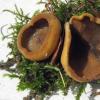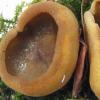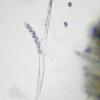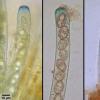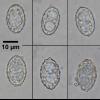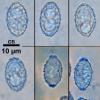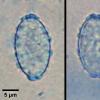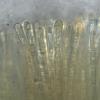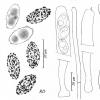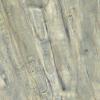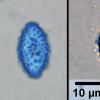
17-12-2025 18:35
 Michel Hairaud
Michel Hairaud
Bonjour à tous/Hi to everyone I am passing along

15-12-2025 15:48
 Danny Newman
Danny Newman
Melanospora cf. lagenaria on old, rotting, fallen

15-12-2025 15:54
 Johan Boonefaes
Johan Boonefaes
Unknown anamorph found on the ground in coastal sa

15-12-2025 21:11
 Hardware Tony
Hardware Tony
Small clavate hairs, negative croziers and IKI bb

15-12-2025 07:09
 Danny Newman
Danny Newman
indet. Rutstroemiaceae sp. on unk. fallen leavesMc

15-12-2025 07:05
 Danny Newman
Danny Newman
Pseudosclerococcum golindoi (det: Zotto)near Cosb

15-12-2025 11:49
 Danny Newman
Danny Newman
ITS sequences from the following two collections B

15-12-2025 12:34
 Danny Newman
Danny Newman
indet. Rhytismataceae on oak leafnear Purchase Roa
 Dear all,
Dear all,I rarely find Peziza in my acid enviroment on sandstone. This is one of yesterday growing in moss on a WW-I graveyard. (sorry for the flood of pictures...)
Asci are IKI+, paraphyses simple, spores feature a rough warty ornament with a polar emphasis stronger staining in CB, size (18.4)19.6-21.4x(11)11.8-13.6 µm (measurements incl. ornament).
I thought on P. depressa, but this polar protuberances reminded me on P. lividula as well. For the latter the shape of the spores are not fusiform enough.
Any hints of yours?
Best regards,
Martin

Chris
Il est possible qu'il s'agisse de Peziza limnaea Gest. Maas. Toutefois les apothécies sont ici très pâles. Par ailleurs, il est très difficile, d'après les photos, de pouvoir apprécier l'ornementation sporale. Chez P. limnaea elle est formée de crêtes allongées, étirées, qui ne s'observent bien qu'avec le plus fort grossissement et dans le bleu coton lactique (Voir dessins en annexe).
L'hypothèse, pour P. lividula, peut effectivement être rejetée. Les ascospores sont en effet plus allongées et de formes irrégulières.
Amicalement
René

Why not Peziza succosa? Asci seem to have simple septa.
Cheers,
Raúl

I think P. succosa fits very well. P. limnaea is also macroscopically another species.
regards,
björn

I excluded succosa because I had this species before with very much paler ascomata and ouzing a yellow latex when hurt in the hymenium. One of the first things I did on the spot was to check this. There was no liquid, milk, latex or whatsoever.
The site is shady with mossy ground but not wet as to be expected for limnea.
I will try to make some new shots of the spores this evening showing better the ornament.
Best regards,
Martin
You should also consider P. michelii, which has similar spores with partly coalescent warts, often more dense at the pole. It normally has a yellow milk, but it is quite often very weak and difficult to see, and if the apothecia is slightly dry, it disappears completly.
According to Hohmeyer, P. depressa has only one guttule, and P. lividula has more fusiform spores with isolated warts.
Best regards,
Daniel

Raúl

I checked the asci. All those floating free have a straight basal septum. I attach a picture of the ascusbases in situ that shows the same.
I attach also a new picture of spores in CB. The warts are forming ridges concentrating to clods at the poles.
I am still lost with the Hohmeyer key (who does not deal with croziers...).
One idea was Donadini's P. muscicola, but I think these ascomata are too pale and according to his description the ornament should form at least an uncomplete reticulum.
Grateful for further ideas,
Martin

Thanks for taking some more pics. Macro, asci and spores look to me very like as Peziza succosa, maybe no latex because the age of the apos or because they were a bit dry?
P. michelii, limnaea, lividula and musciola have croziers, so I would discard those.
Cheers,
Raúl

as I said initially a Peziza is a rare find for me and therefore I have few experience.
I found P. succosa before, very much paler and with a distinctly yellowing milk on tissue paper. But you may be right that these apos from my recent find are too mature to show this feature.
It seems to me that Peziza is not a Genus successfully handled with keys but with experience foremost ;-)
Cheers
Martin

